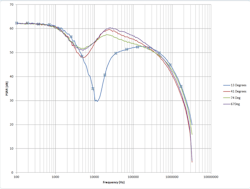Earlier this month Power Electronics received a question about "How to measure PSRR of a linear regulator circuit that powers an oscillator for an ADC. How can I make this measurement using my oscilloscope?" We asked our expert in PSRR, Steve Sandler to weigh in on the subject (view his response here) and also encouraged readers to submit other questions they had about the space.
Below are the responses to the questions that Steve had time to answer.
I've seen PSRR called power supply rejection ratio and also power supply ripple rejection. Which do you prefer? - Brian
Hi Steve,
Does PSRR affect other analog ICs other than LDOs? - Matt
Steve,
What is the definition of PSRR? I am having a hard time understand the application - Regards, Tito
Hello Steve,
How does power supply rejection ratio impact power supply performance? - Bill
Continue reading Steve's responses pg. 2
Dear Steve,
How does frequency impact PSRR? - Joe
About the Author
Steve Sandler
Steve Sandler is the founder and chief engineer of AEi Systems LLC and the president of Picotest. At Picotest he is responsible for signal injector product development, as well as the overall operation of the test equipment company.






